What herbs can be grown on a windowsill, rules for caring for plants

In winter, it is not always possible, or even the means, to buy a lot of greenery. Prices are quite high, and the range is reduced compared to summer. But a person’s need for microelements and vitamins increases during the cold season.
Perhaps it was these factors that caused the emergence of a fashion for growing some garden plants in apartment conditions. Of course, in order to engage in such a useful and interesting activity, you should know exactly what herbs can be grown on the windowsill and what conditions will need to be created for the normal development of such crops.
Content:
- What herbs can be grown on the windowsill?
- Is it possible to grow herbs in one pot?
- Where can you buy herbs in pots?
- Growing herbs from cuttings
- What herbs can be grown on a windowsill in winter?
- We grow perennial herbs on the windowsill
- About the features of care during the winter period
- How to create optimal conditions
What herbs can be grown on the windowsill - what can be transplanted from the garden
First, let's consider the simplest option - planting in pots spices, which were grown in summer garden beds. They should be transplanted before frost begins.
They will feel good in indoor conditions:
- oregano and Melissa
- mint and sage
- savory and thyme
- hyssop and annual basil
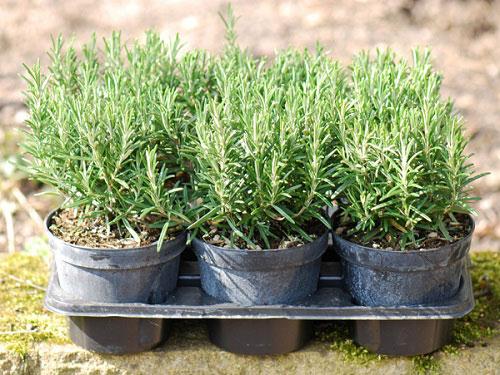
For replanting, you should choose the most beautiful and strong specimens; it is advisable to dig them out with a clod of earth in order to injure the root system as little as possible. If the bushes are large, they can be divide, or take offspring for planting. A high-quality earthen mixture is poured into the pots.
Let's share some useful tips:
- greenery on transplanted bushes should be trimmed
- basil and hyssop only require pinching of shoots
- tarragon should not be brought into the house immediately; after transplanting, it should stand in the garden until the leaves die off naturally; then the pot is brought into the house, placed in a warm, bright room, and fertilizer is added
These little tricks will help you cope with the most demanding crops.
Is it possible to grow herbs in one pot?
Pots for replanting, you should not take too large ones; their size should exceed the dimensions of the earthen ball with roots by 3-5 cm, otherwise a large amount of unused moisture will lead to rotting of the roots.
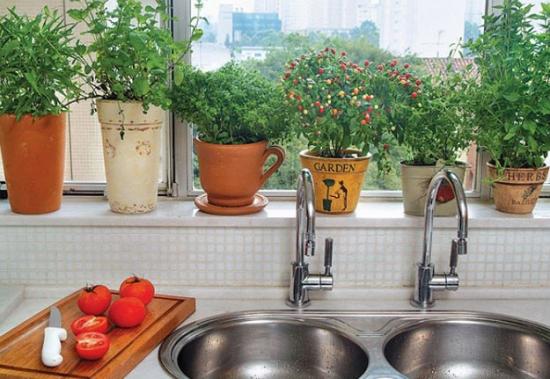
Spicy crops should not be treated solely as a source of greens for the table. Most of them have a rather attractive appearance and can be used to decorate a kitchen window, or even the entire kitchen.
You can grow spicy crops in personal in pots, the aromatic mix looks good in a balcony box or vegetable garden - a special container with pockets and holes.
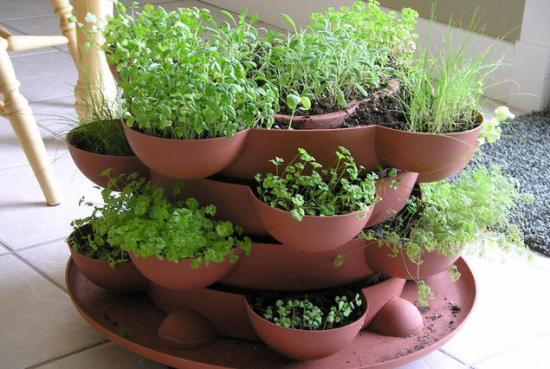
When planting herbs in one pot, it is advisable to clarify:
- are they compatible
- Will the same care, frequency of watering and fertilizing suit them?
- will the rapidly growing shoots of one of them displace the weaker shoots of the other?
Many people are interested in indoor gardening; it is both fashionable and useful.The lesson cannot be considered too difficult, especially if you have basic knowledge of caring for plants.
Where can you buy herbs in pots?
A rational option for replenishing the collection of spices on the windowsill would be to purchase ready-made plants from pots. Since garden centers often announce sales in the fall, this will not cost much.
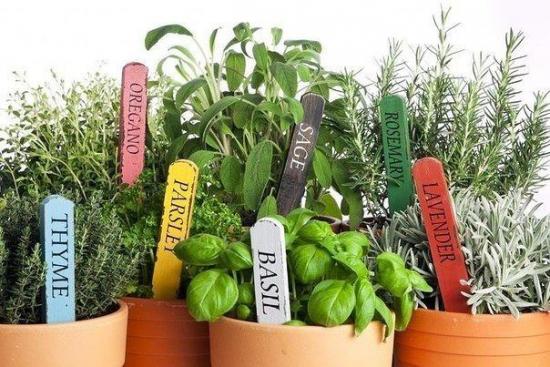
Most often in the assortment of specialized stores you can find:
- thyme and sage
- lavender and different varieties of mint
Bay tree and rosemary can be grown as indoor perennial herbs.
Growing herbs from cuttings
Some spices are convenient to propagate by cuttings, these are:
- thyme and oregano
- hyssop and mint
- sage
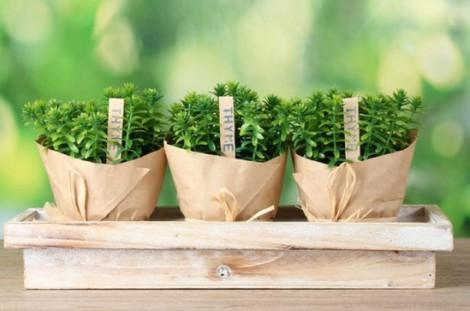
In this case, high-quality planting material consists of ten-centimeter apical shoots.
The lower leaves on them should be removed; rooting can be carried out under a greenhouse created from a cut plastic flask or plastic bag.
To accelerate root formation, you can use treatment with Konevin or Zircon, according to the instructions for these drugs.
It is advisable to provide high-quality lighting.
The advantages of this method are the ability to quickly obtain young specimens capable of producing a large amount of green fragrant mass.
What herbs can be grown on a windowsill in winter?
No housewife can do without parsley in the kitchen, celery. Their fragrant leaves are an excellent addition to borscht, soups, salads, and stir-fries.
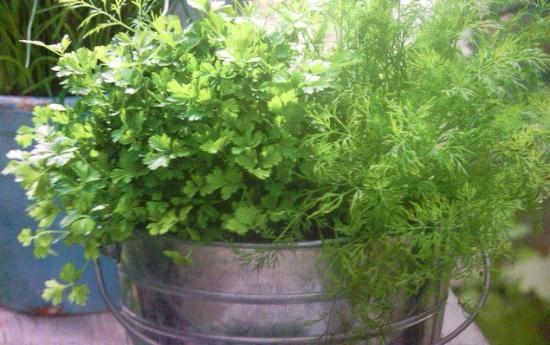
All crops are quite suitable for growing on a windowsill in winter, because... They are not particularly demanding when it comes to lighting.
You can transplant root crops into pots from the garden, or you can plant those bought in a store or market, but only if their tops are not damaged.
To obtain greenery, it is recommended to continuously plant new batches of root vegetables every month. The ideal place for their winter storage is in a cellar or basement, immersed in wet sand.
Plants will require one-time feeding. It takes about a month from planting to receiving greenery.
Can be planted in pots onion and garlic. It is best to take one that has already sprouted. If desired, onions can be grown in glasses of water. Garlic gets along well with different crops; sprouted cloves can be planted in containers with other spices.
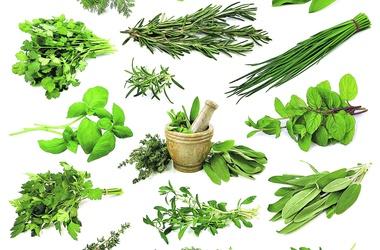
If you plan to grow herbs throughout the winter, you should give preference to those that are undemanding in terms of lighting. Otherwise, you will have to organize lighting.
Herb sowing kits
There are many plants that can sprout and develop normally in short winter days. Specialized stores often sell sets selected by specialists, which include seeds of crops that can withstand indoor growing conditions, special substrate for sowing them and beautiful, convenient containers.
The most common crop is watercress salad, it can grow in a pot or even on a damp cloth in a saucer. Does not require good lighting, green mass grows very quickly. The shoots are ready for consumption a few days after emergence.

When grown in soil, the green mass will ripen a couple of weeks after sowing.
Salad mustard is grown using the same principle. It is ready for harvesting when the seedlings reach 5 centimeters in height.If desired, you can use mixed plantings of watercress, caboons and mustard. All plants are cold-resistant and undemanding to lighting.
Watercress is also undemanding to light, but it needs constant watering. It is grown from seedlings or cuttings. They should be rooted in water.
We grow perennial herbs on the windowsill
Let's consider the most popular perennial spices suitable for growing on a windowsill.
Rosemary
Its aroma will perfectly complement any meat dish, sauce or marinade.
The plant is evergreen and has a rather decorative appearance. It has medicinal properties and affects the heart and nervous system.
Thyme
The plant is quite adapted to indoor conditions.
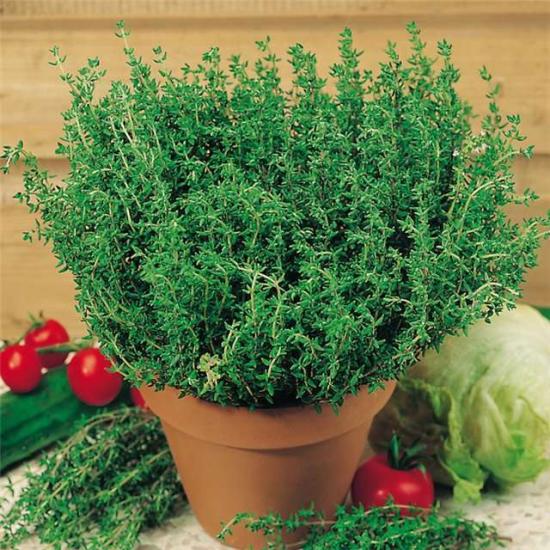
Has healing properties:
- is an antiseptic
- cures colds
- used to treat insomnia
It can grow indoors, but will require increased care. In winter, you will need to provide lighting - the plant needs 10 hours of daylight. Lavender loves warmth and high humidity. Do not allow the soil in the pot to dry out.
Lavender is used for aromatherapy sessions and in the treatment of diseases of the nervous system. A well-groomed plant looks very attractive.
You can often find evergreens in the kitchen. laurel tree. It exudes an amazingly appetizing smell. Caring for laurel is quite simple. Water it with settled soft water and periodically spray the leaves.
Laurel
It cleans the air well; the substances produced by the leaves kill fungus and act as an antiseptic. Laurel is often grown as a medicinal plant.
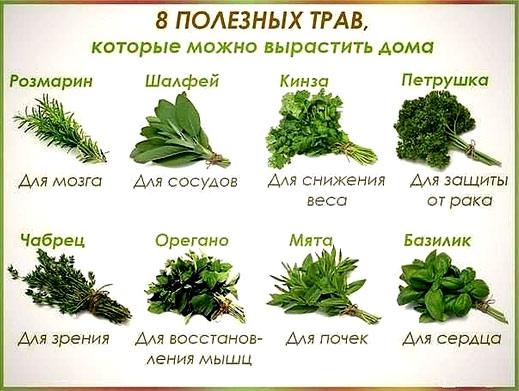
Sage
Also a perennial plant, it can survive without sufficient moisture, but will not withstand a lack of light. Used in cooking, medicine, cosmetology.
In order for sage to retain its ability to produce valuable essential oils, you will need to find the brightest place in the apartment to place it. The plant requires systematic pruning, which stimulates the growth of lateral shoots and tillering.
About the features of care during the winter period
Low air humidity during the heating season does not have the best effect on plants - the leaves suffer from a lack of moisture, and the soil in flowerpots dries out faster. Since soil dries out more slowly in plastic containers, it is recommended to use plastic pots for growing moisture-loving crops.
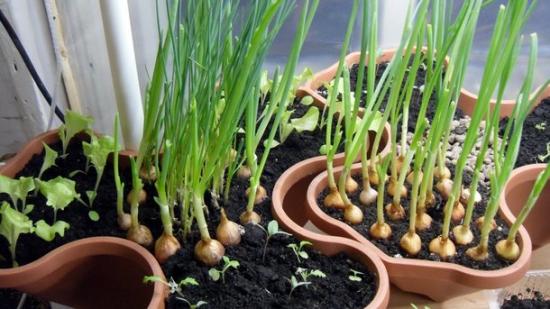
For all types of plants, pots should be provided with drainage; ceramic fragments, expanded clay, and pieces of polystyrene foam can be used as drainage.
Moving plants into your home can be dangerous in terms of introducing diseases and pests. In room conditions, they can be detrimental to plants. thrips and common aphid. Therefore, before bringing them into the house, you will need to wash the leaves and trunks with water and green soap, which, being an environmentally friendly product, has a disinfectant and insecticidal effect.
The soil in pots should be treated with Fitosporin M; this is less harmful than steam sterilization.
How to create optimal conditions
In winter, the days become so short that almost all plants begin to suffer from a lack of natural light.Since the goal is to obtain green mass rich in vitamins and essential oils, it will be necessary to ensure that the plants are exposed to sunlight for at least five hours a day.
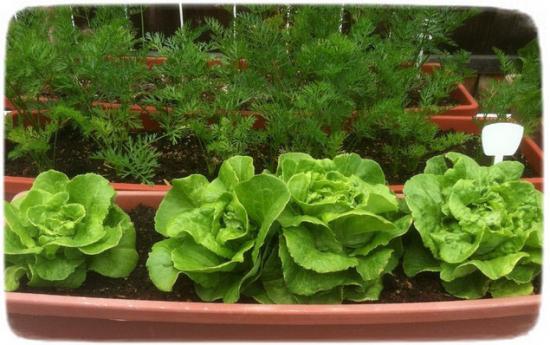
When using artificial lighting, one should take into account the lower intensity of artificial light, i.e. The illumination period should be longer; the type of lamps used is also taken into account here.
It is recommended to take care of additional air humidification; a common option is to place the pots in trays filled with gravel with a centimeter layer of water poured into them. Household air humidifiers are also used.
Comfortable temperature conditions - from + 20 + 22 C during the day to + 15 C at night.
Growing aromatic herbs on the windowsill, you shouldn’t be afraid to pick off the greenery from them - the plants quite quickly sprout new shoots and grow leaves. Flowering should not be allowed - all inflorescences must be cut off.
Feeding after one and a half to two months will enhance the process of formation of green mass. Since it is used as food, it is better to fertilize organic fertilizers.
A good option would be:
- Vermicompost
- Lignohumate
- Potassium humate
You can learn more about growing greens on a windowsill by watching the video:

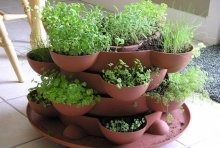
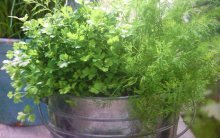
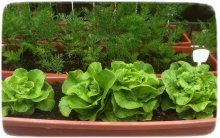
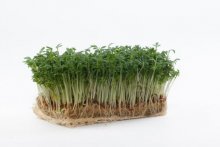

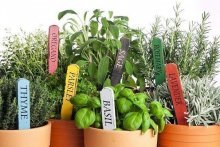
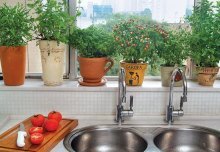



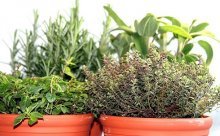
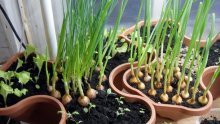
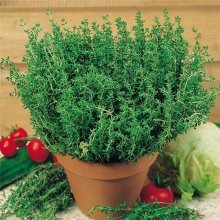

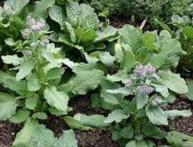
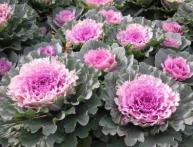
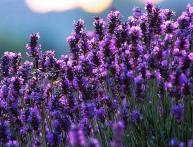
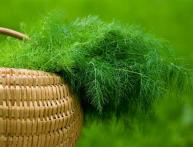
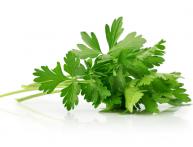
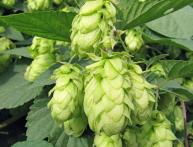
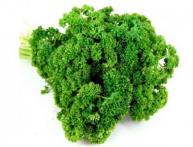
Comments
I grow dill, parsley, cilantro and onions on the balcony all year round. There have never been any problems, the main thing is to monitor constant watering and provide the plants with a warm and bright room.
I’ve never tried growing herbs, well, just onions for greens. It grows well even just in a glass of water. But with herbs, it seems to me that it’s already more difficult.It is necessary to provide good humidity and lighting, otherwise the plants will be weak and elongated.
This year I tried to grow watercress. It was interesting, because I planted it on ordinary paper napkins, it quickly sprouted and literally in ten days I got a harvest.
I grow herbs in the house all year round, not only in winter. The soil in the garden is completely unsuitable for parsley or anything else. We have to get out, because... I really like greens. I liked the idea of growing for decoration, we will decorate the kitchen :)